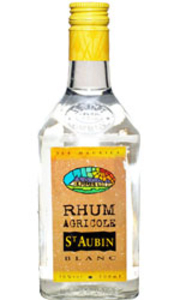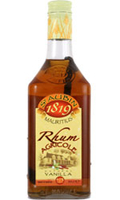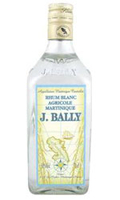-
Home
-
Contributors
-
International
-
Account
-
Information
More From Contributor
- number 1126222. ...
10 Cane - Rhum Agricole 70cl Bottle
taste of raw sugar juice was what I ultimately wanted to bring to the spirit.' To that end, the choice of the best cane is key to the rum as well as using it when it is as fresh as possible, he says. Pineau even praises the local harvesters of Trinidad, whom he describes as artists with their machetes. The copper pot stills are alembics that Pineau brought from Cognac. The rum is distilled twice. While pot stills convey more of the flavour of the raw materials in a spirit, they all allow impurities that the distiller must eliminate through his skill. Key to that, says Pineau, is boiling the fermented product at low temperatures as they do in Cognac. While other producers of superpremium rums would certainly dispute Moet Hennessy's claim that it is the first to bring luxury to the
category, there is no denying its contention of innovation. The approach of focusing primarily on the inception, and not the maturation, of the spirit is unique in this price category. The rum is aged for a comparatively scant six months in French oak. Typically, high-quality rums are aged for years and used Bourbon barrels are the vessels of choice. The result is a bright rum, clear with the slightest lemon-lime colour. The bouquet is particularly floral, with a back aroma of olive oil. The palette certainly corroborates Pineau's intention with a sharp taste of cane sugar, but there are also hints of citrus, vanilla and spice, as well as fusel oils. The finish happens in the roof of the mouth with a residual blast of lemon. The makers also tout 10 Cane for drinking neat or on the
rocks. However, if your concept of a sipping rum means the mellow charms of a Pampero or a Bacardi 8, this zesty drink will be a departure that requires a different aesthetic approach to its redeeming qualities.
- External links may include paid for promotion
- Availability: In Stock
- Supplier: TheDrinkShop
- SKU: 4125-10099
Product Description
10 Cane Rum is the brainchild of Hennessy master distiller Jean Pineau, who was charged by the company five years ago with its creation. The challenge, he says, was quite satisfying: 'I control the quality of Cognacs, but I don't create Cognac. This rum I created.' From the start, Pineau's philosophy was to apply the Cognac makers' standards of high quality in the choice of raw materials to the making of rum. That led to the use of sugarcane as opposed to molasses & also to the decision to use only the first pressing of the cane, which yields 25 percent less juice, but delivers a higher quality product, according to Pineau. He describes a revelation he had regarding rum making on one of his expeditionary trips to the Caribbean: 'I sucked on a cut cane in a field & decided that taste of raw sugar juice was what I ultimately wanted to bring to the spirit.' To that end, the choice of the best cane is key to the rum as well as using it when it is as fresh as possible, he says. Pineau even praises the local harvesters of Trinidad, whom he describes as artists with their machetes. The copper pot stills are alembics that Pineau brought from Cognac. The rum is distilled twice. While pot stills convey more of the flavour of the raw materials in a spirit, they all allow impurities that the distiller must eliminate through his skill. Key to that, says Pineau, is boiling the fermented product at low temperatures as they do in Cognac. While other producers of superpremium rums would certainly dispute Moet Hennessy's claim that it is the first to bring luxury to the category, there is no denying its contention of innovation. The approach of focusing primarily on the inception, & not the maturation, of the spirit is unique in this price category. The rum is aged for a comparatively scant six months in French oak. Typically, high-quality rums are aged for years & used Bourbon barrels are the vessels of choice. The result is a bright rum, clear with the slightest lemon-lime colour. The bouquet is particularly floral, with a back aroma of olive oil. The palette certainly corroborates Pineau's intention with a sharp taste of cane sugar, but there are also hints of citrus, vanilla & spice, as well as fusel oils. The finish happens in the roof of the mouth with a residual blast of lemon. The makers also tout 10 Cane for drinking neat or on the rocks. However, if your concept of a sipping rum means the mellow charms of a Pampero or a Bacardi 8, this zesty drink will be a departure that requires a different aesthetic approach to its redeeming qualities.
Reviews/Comments
Add New
Intelligent Comparison
Price History
Vouchers
Do you know a voucher code for this product or supplier? Add it to Insights for others to use.


 United Kingdom
United Kingdom
 France
France
 Germany
Germany
 Netherlands
Netherlands
 Sweden
Sweden
 USA
USA
 Italy
Italy
 Spain
Spain

















 Denmark
Denmark